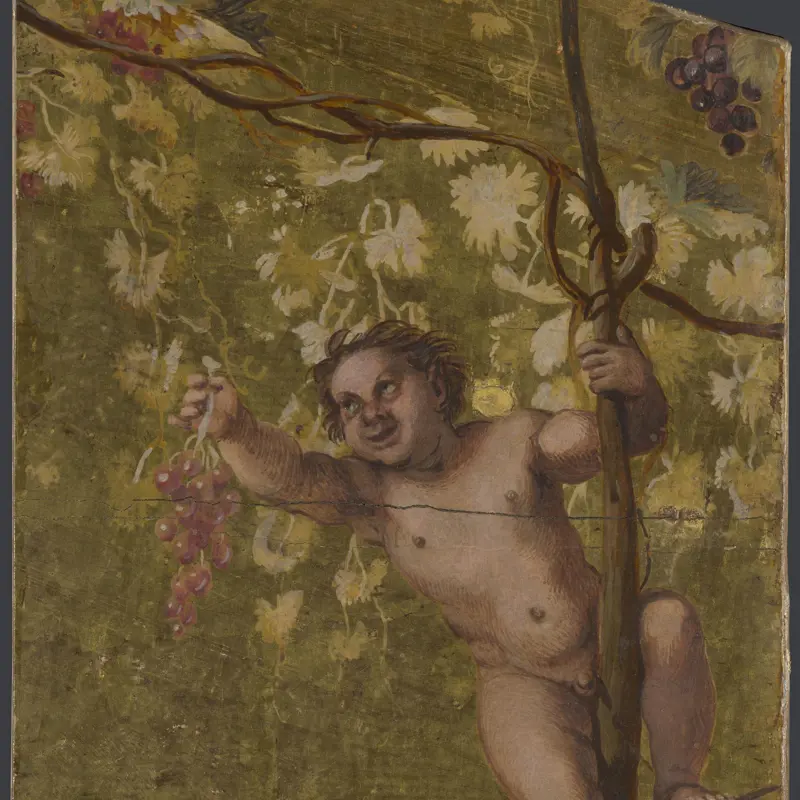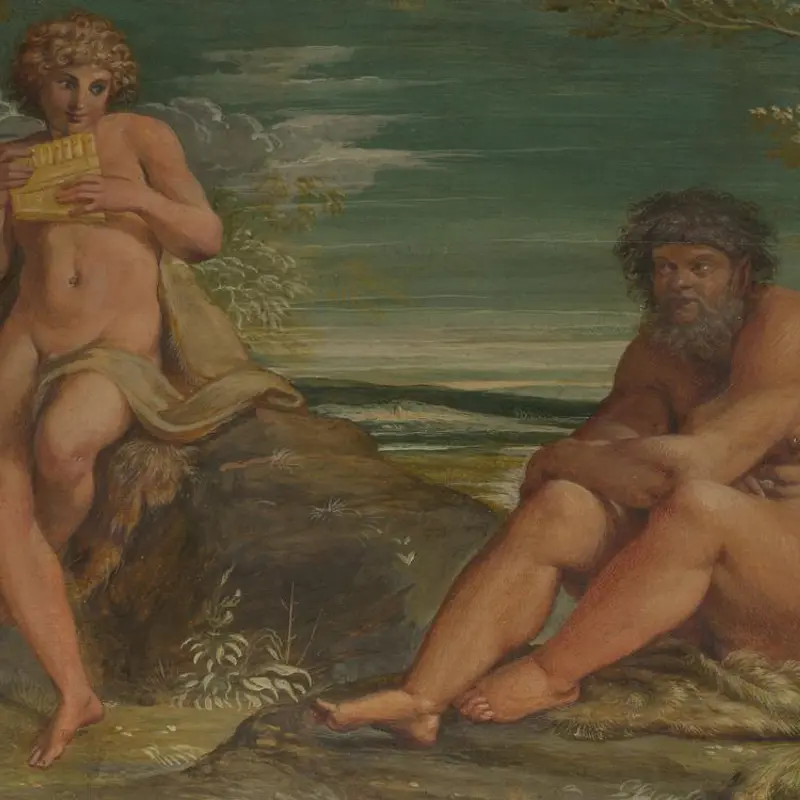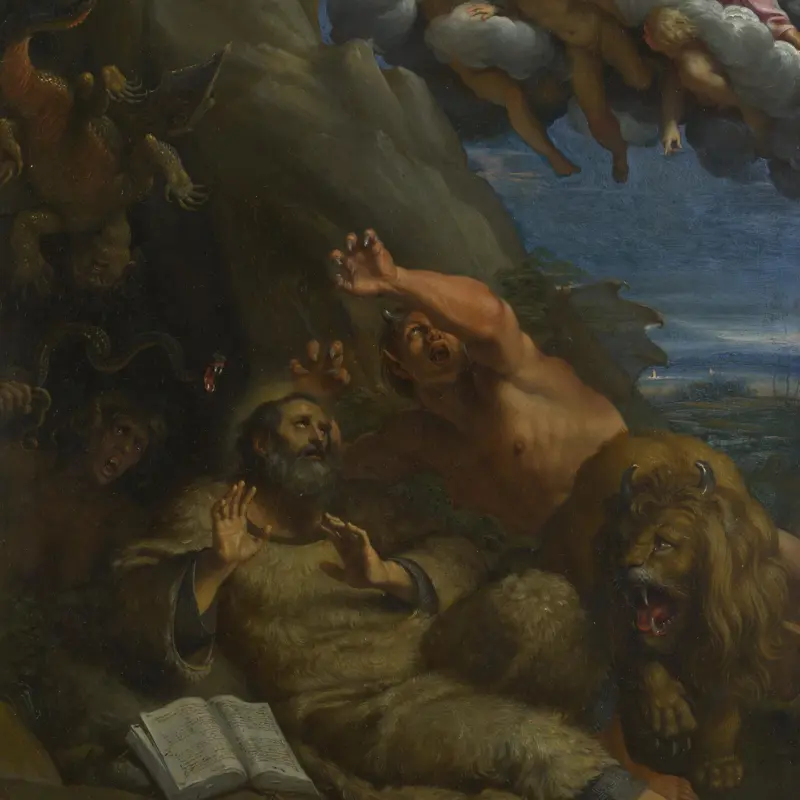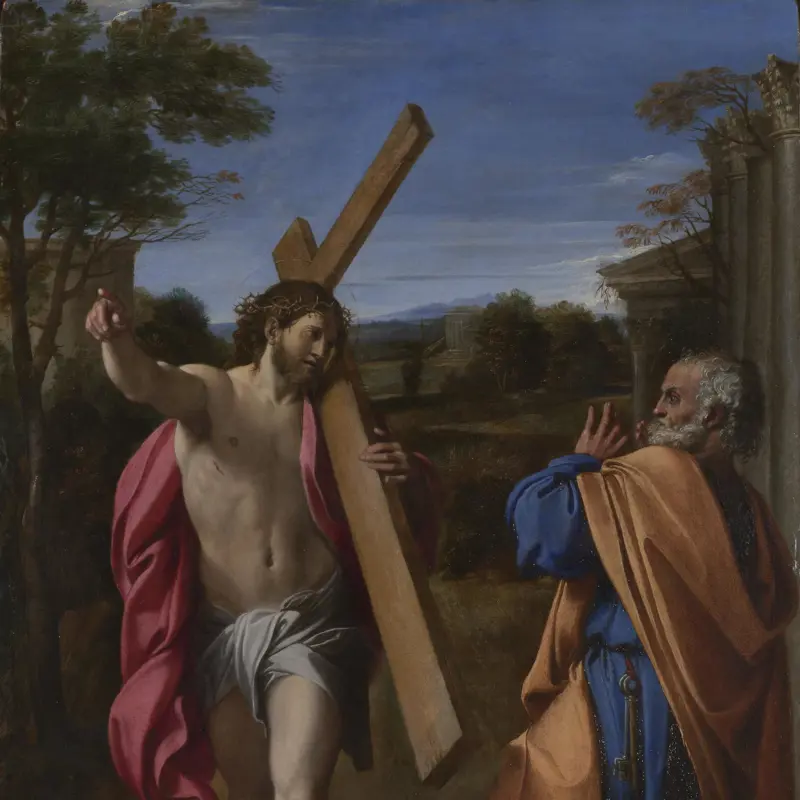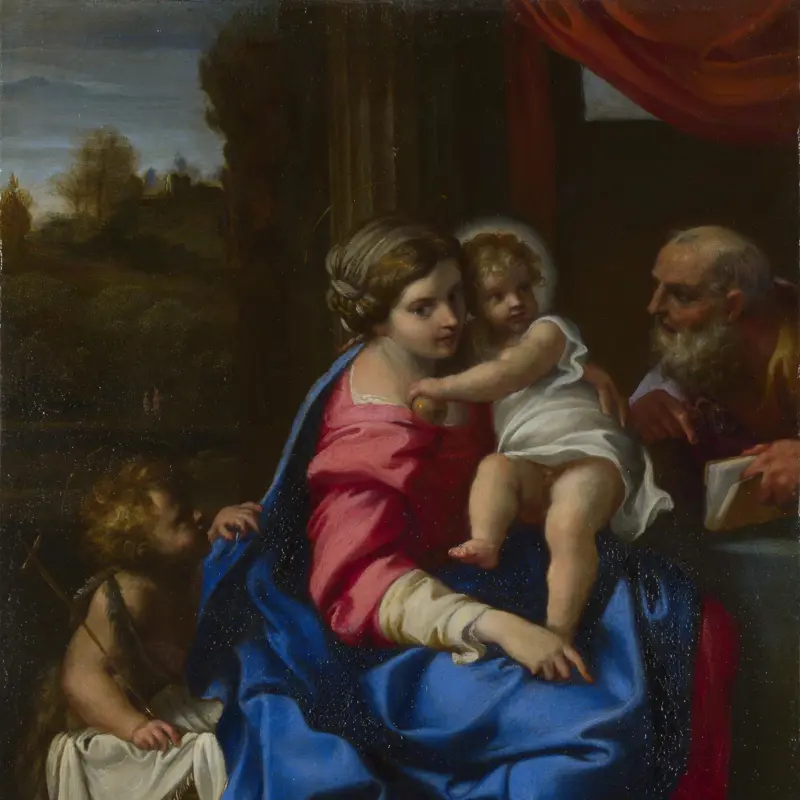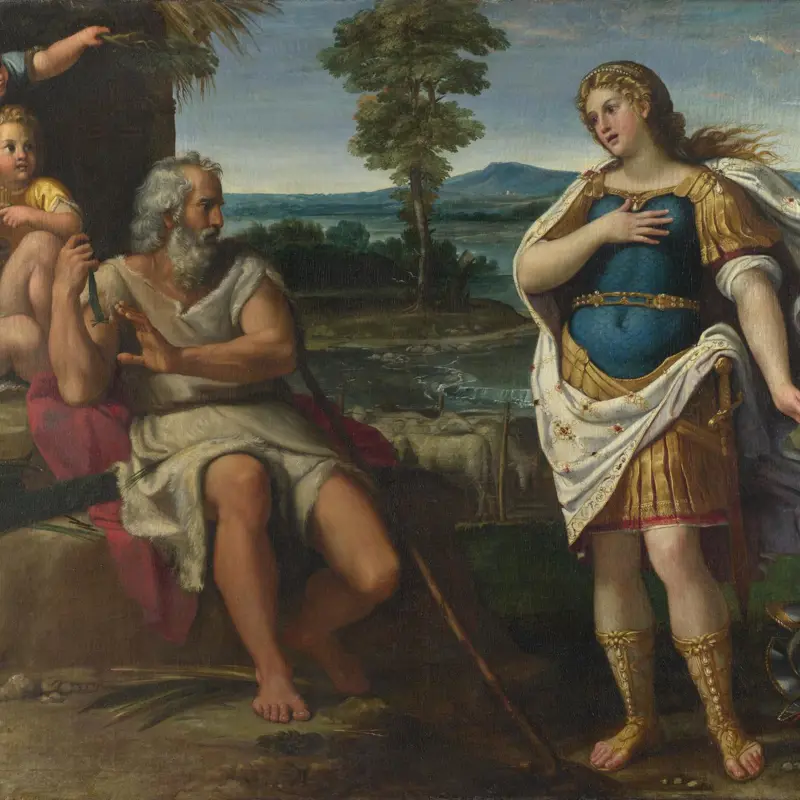Annibale Carracci, 'Marsyas and Olympus', 1597-1600
About the work
Overview
A naked golden-haired youth sits on a rock, playing the panpipes; another set of pipes hangs from the tree behind him. An older bearded man sits nearby on the ground, his panpipes also hanging from a branch. This is perhaps the satyr Marsyas; the youth may be Olympus, described in classical sources as a composer, follower and occasional favourite of Marsyas. The musical theme is especially appropriate as this long panel is part of the case of a musical instrument, probably some kind of harpsichord.
The figures are based on antiquities in the collection of the powerful Farnese family. The original instrument was perhaps owned by Fulvio Orsini, librarian and curator to successive Farnese cardinals from 1558 until his death in 1600.
Key facts
Details
- Full title
- Marsyas and Olympus
- Artist
- Annibale Carracci
- Artist dates
- 1560 - 1609
- Part of the series
- Panels for a Musical Instrument
- Date made
- 1597-1600
- Medium and support
- oil on wood
- Dimensions
- 34.4 × 84.2 cm
- Acquisition credit
- Bought, 1824
- Inventory number
- NG94
- Location
- Not on display
- Collection
- Main Collection
- Previous owners
Provenance
Additional information
Text extracted from the ‘Provenance’ section of the catalogue entry in Michael Levey, ‘National Gallery Catalogues: The Seventeenth and Eighteenth Century Italian Schools’, London 1986; for further information, see the full catalogue entry.
Bibliography
-
1986Levey, Michael, National Gallery Catalogues: The Seventeenth and Eighteenth Century Italian Schools, London 1986
-
2001
C. Baker and T. Henry, The National Gallery: Complete Illustrated Catalogue, London 2001
About this record
If you know more about this work or have spotted an error, please contact us. Please note that exhibition histories are listed from 2009 onwards. Bibliographies may not be complete; more comprehensive information is available in the National Gallery Library.
Images
About the series: Panels for a Musical Instrument
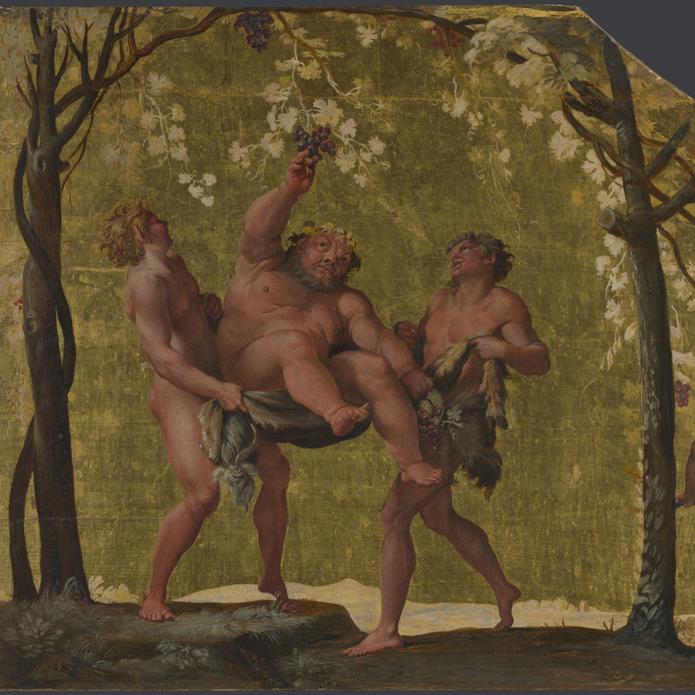
Overview
These three panels were originally part of an early keyboard instrument, or possibly a pair of instruments, and show scenes of music-making and drinking. Silenus gathering Grapes and Young Satyr gathering Grapes are probably from the inside of the lid, and would only have been seen when the instrument was open. Marsyas and Olympus may have also belonged to the lid of the keyboard or to some part of the instrument’s case.
They were painted by Annibale Carracci in the late 1590s, perhaps for Fulvio Orsini, classical scholar and librarian/curator to the powerful Farnese family in Rome. The designs for some of the figures are based on classical objects owned by the Farnese.


